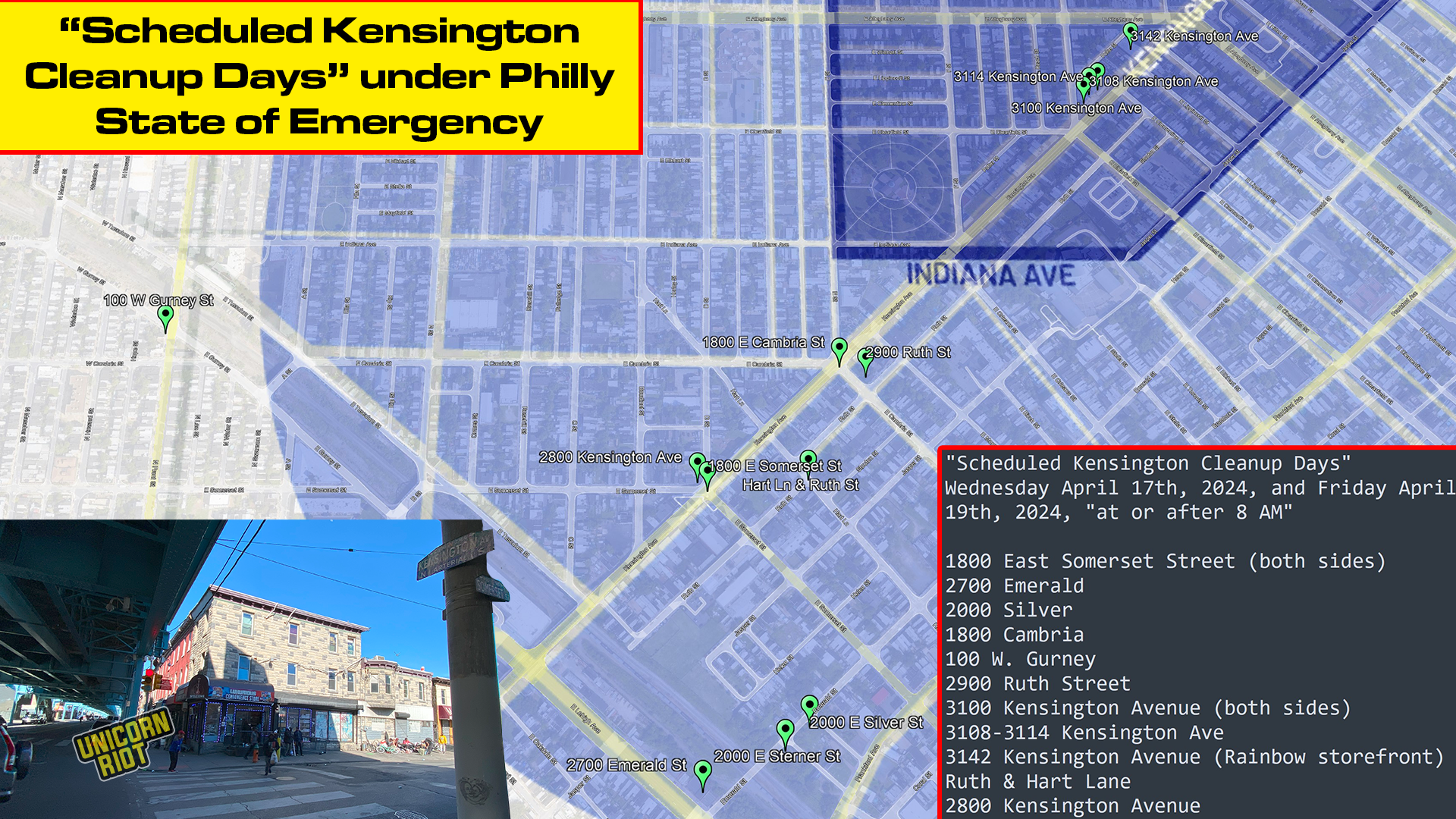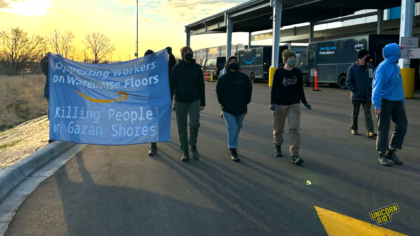Imminent ‘Cleanups’ Scheduled Under Philadelphia ‘State of Emergency’ Kensington Operations
A schedule obtained by Unicorn Riot shows an imminent government plan to “cleanup” specific locations in Philadelphia’s Kensington neighborhood — but who benefits from altering a “billion dollar” drug shadow economy?
Philadelphia, PA — Unicorn Riot has obtained a schedule for “cleanup” operations due in the next 72 hours in Philadelphia’s Kensington neighborhood, one element in new Mayor Cherelle Parker’s plan to dramatically change local conditions through state action. Some parts of Kensington have become well-known for open-air drug use and homelessness, which has become a subject of international attention, national political sniping and Internet clickbait. Days after Parker toured the area, “Kensington Cleanup Days” are slated to happen at certain locations. The “clearing” of encampments has been publicized in recent days.
Some local groups are concerned that Mayor Parker’s heavy-handed approach could increase incarceration or lay groundwork for wealthy developers to move in. Other parts of Kensington have seen rapid construction recently, just blocks away from the targeted area.
May 8: In New Sweep, Police Ban Observers & Media from Control Zone in Kensington, Philadelphia
The Parker administration declared a State of Emergency just after swearing in (PDF of Executive Order 1-24 here). The previous mayor, Jim Kenney, refused to declare a State of Emergency. Now, a “Kensington Community Revival” “five-phase initiative” has been launched as well, but we hear that information on important plan features like specific treatment centers for people facing addiction in the area is hard to come by. (The police department also released a 100-day report (53 page PDF) last week as directed by the emergency order.)
We have learned imminent clearings are scheduled at the following locations under “Scheduled Kensington Cleanup Days” on Wednesday April 17th, 2024, and Friday April 19th, 2024, “at or after 8 AM.”
- 1800 East Somerset Street (both sides)
- 2700 Emerald
- 2000 Silver
- 1800 Cambria
- 100 W. Gurney
- 2900 Ruth Street
- 3100 Kensington Avenue (both sides)
- 3108-3114 Kensington Ave
- 3142 Kensington Avenue (Rainbow storefront)
- Ruth & Hart Lane
- 2800 Kensington Avenue
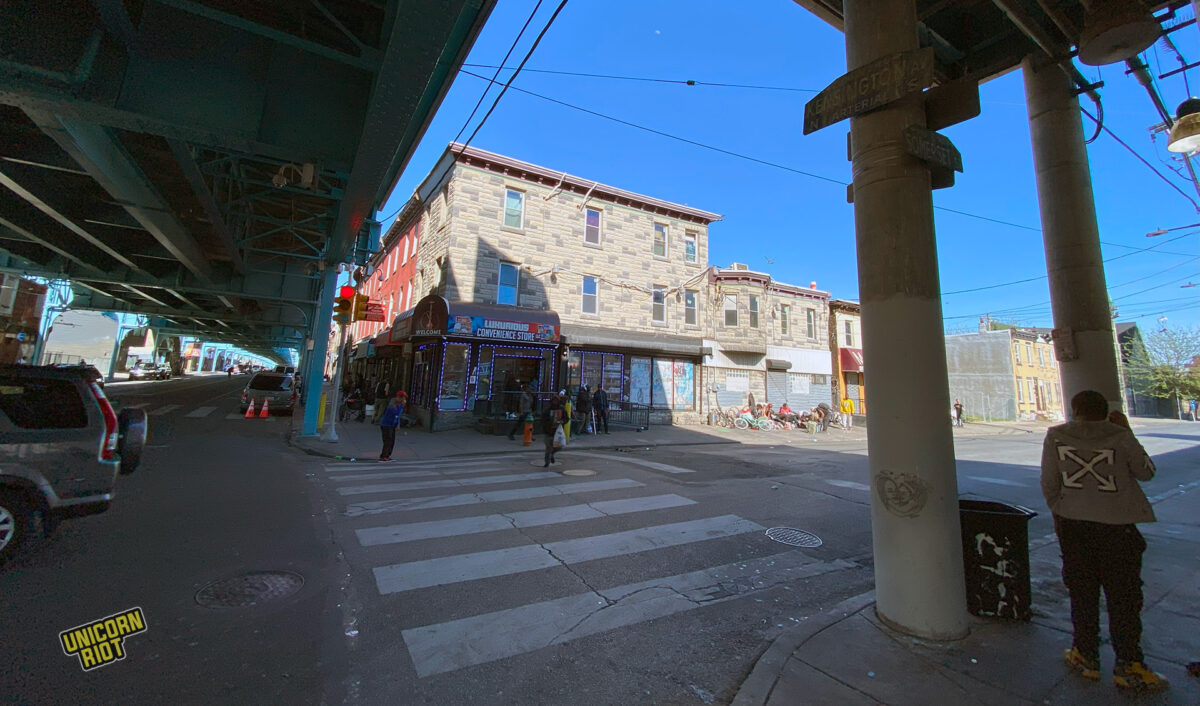
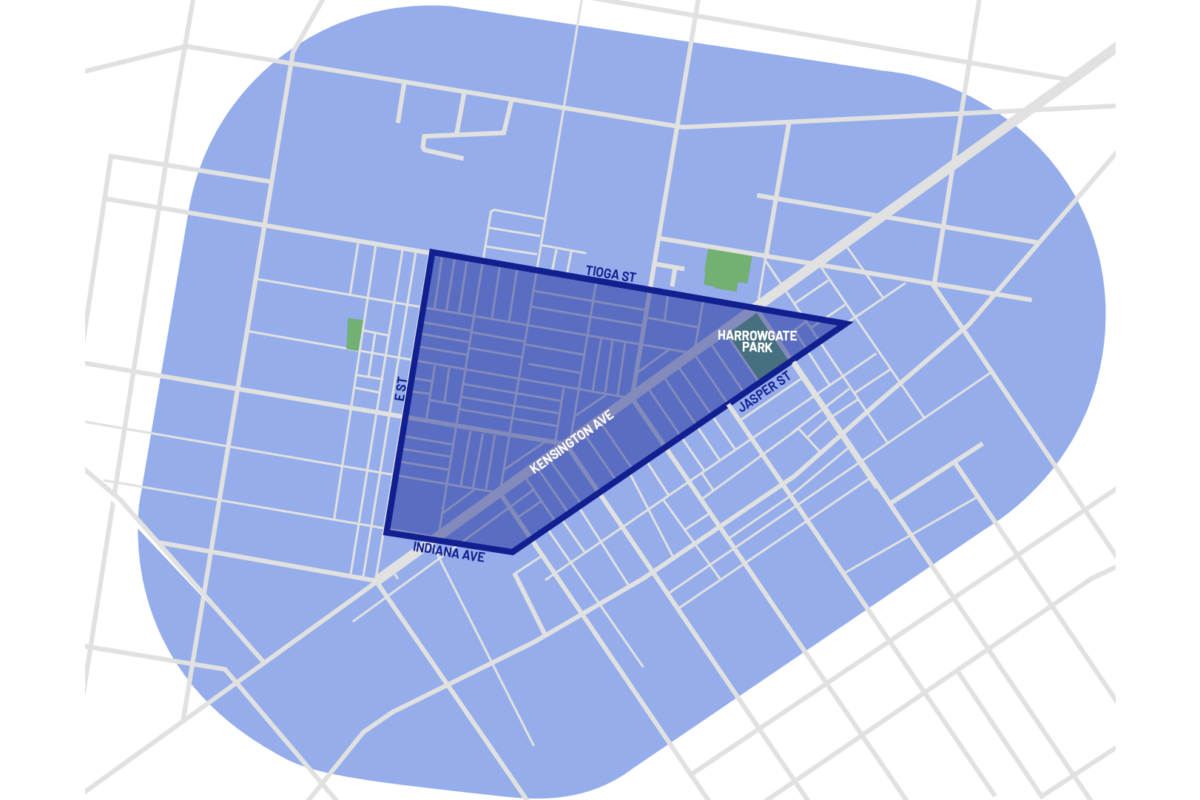
For many years, Kensington ‘revitalization’ plans have come and gone. According to local urban anthropologist Bill McKinney, the previous plans included:
“History is repeating in Kensington. It doesn’t have to be this way.” Bill McKinney, WHYY, May 2021
- “All efforts have run through the city’s Managing Director’s Office or the often centralized efforts of the Philadelphia Police Department, which lack the expertise and resources to implement strategies to address poverty, addiction, violence, and helping the unsheltered.
- No authentic, participatory, community engagement processes that lead to sharing of power and co-creation of solutions with the community.
- Each effort has treated Kensington and its residents as the problem, thereby ignoring the actual causes of the core issues, vilifying residents, and encouraging additional exploitation of the community.
- After 20 years of interventions, racial disparities in areas ranging from housing to health outcomes have increased, and while every effort has claimed success at some point, none have had any form of measurable sustainable accomplishment for residents, only for those leading the efforts.”
McKinney acknowledged the giant scale of the area’s shadow economy, which was a result of decades of disinvestment: “We’re trying to turn off a billion-dollar industry […] There was intentional disinvestment in this community — and so that economy was replaced with another economy. That other economy needs to be addressed. It’s not addressed just by picking up a few people and locking them up.”
From the perspective of people like former Kensington Neighborhood Association President Eduardo Esquivel, the government’s existing strategy has been to “keep a billion-dollar open-air drug market contained in Kensington.”
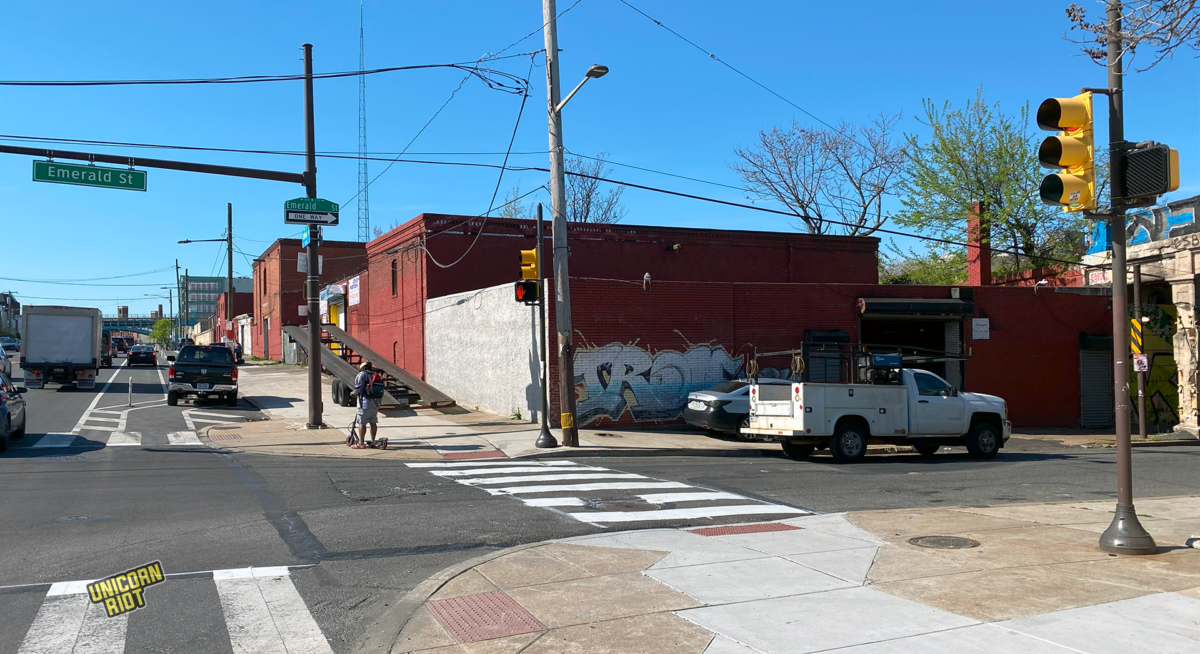
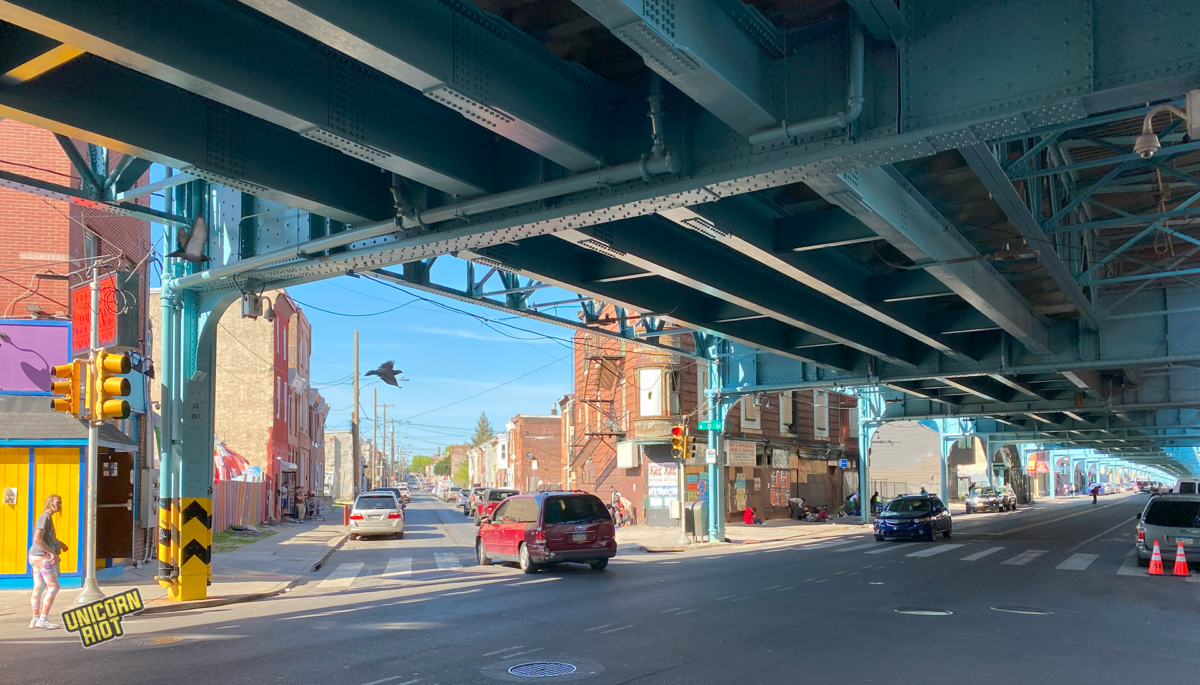
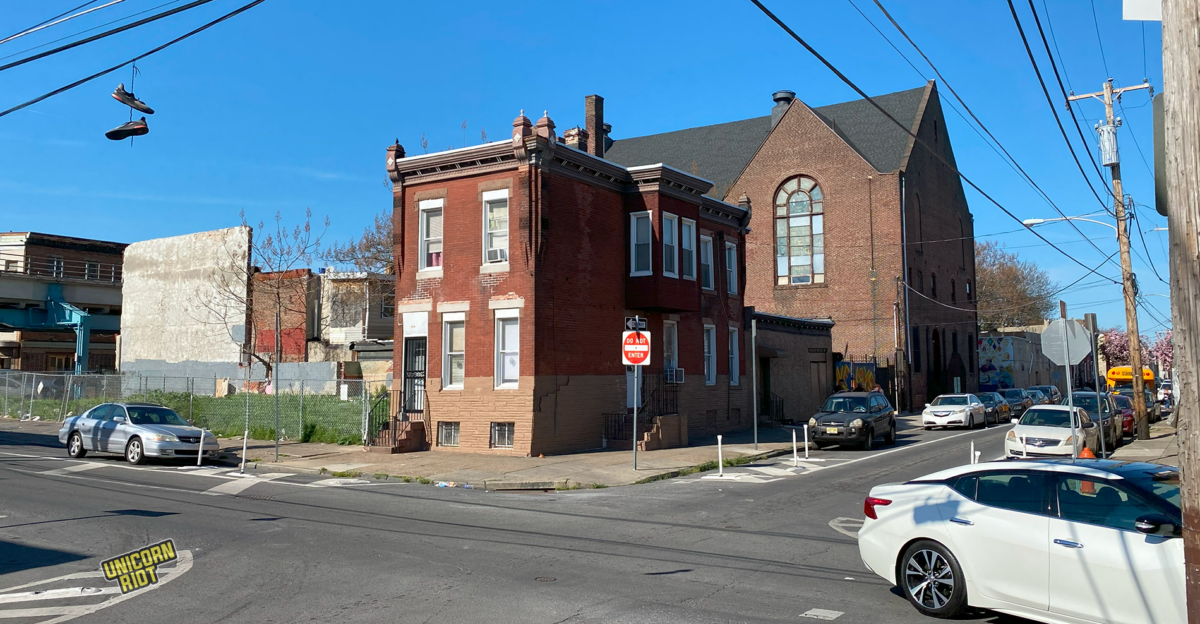
Other planning frameworks previously developed include the “North of Lehigh Neighborhood Revitalization Plan” (Dec. 2013 PDF) and the Heart of Kensington plan. KensingtonPlan.org has more information about these plans and the use of opioid settlement funds.
Questions over Krasner & DEA Roles in Kensington
Apart from the Kensington Caucus at Philadelphia City Council, which has been openly hostile to well-known harm reduction programs like needle exchanges, there are other players to consider. (Council member Quetcy Lozada “asked the real estate developer who owns the building where Savage Sisters is located to terminate the organization’s lease,” CBS Philadelphia reported in February. Harm reduction nonprofit Savage Sisters provides services like wound care, caused by ‘tranq’ (xylazine) – a tranquilizer commonly found in the area drug supply.)
With Mayor Parker’s new pressure to remove people, any plan to force people into “treatment or jail” decisions hinges on District Attorney Larry Krasner’s discretion. The de facto policy right now doesn’t push jail time for simple drug possession. Therefore, the DA office would need a policy shift to impose this choice on detained people. (Paraphernalia or public intoxication charges could also be leveled.)
A source with close knowledge told Unicorn Riot that they heard the federal Drug Enforcement Agency (DEA) is also taking an interest in the situation. Federal agents have been photographed in the area in recent months. The source relayed that the DEA was concerned about violence around the clearing operations so they may want to reshape the marketplace by coercing dealers into leaving, hoping that would disperse open-air drug consumers to other areas of Philadelphia. (The DEA Philadelphia Field Division office conducts “Operation Engage Philadelphia” in the city.)
Unicorn Riot was also told that the Philadelphia Police Department has intentionally been dropping off intoxicated people at dispersed locations around the city.
This police operations pattern reminded us of multiple instances during the 2011-2012 Occupy Movement where police would drop off intoxicated people at the protest camps, as well as the 2012 Drug Recognition Evaluator (DRE) scandal in Minneapolis, where the Minnesota State Patrol was running a program to give unhoused people drugs at a shed by the MSP International Airport before dropping them off at the protest encampment at Peavey Plaza.
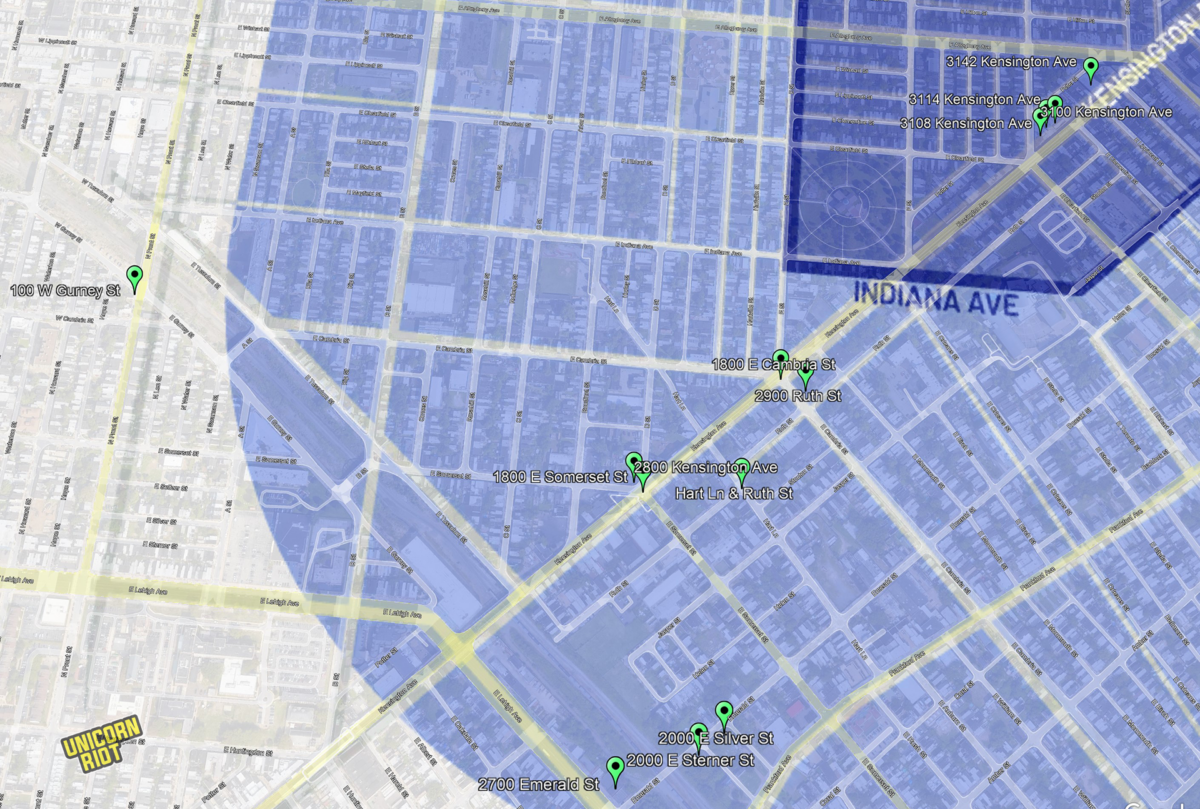
Cover image composition and photos by Dan Feidt.
Follow us on X (aka Twitter), Facebook, YouTube, Vimeo, Instagram, Mastodon, Threads, BlueSky and Patreon.
Please consider a tax-deductible donation to help sustain our horizontally-organized, non-profit media organization:

